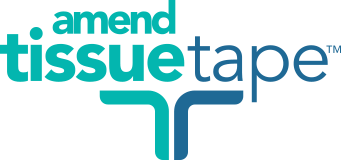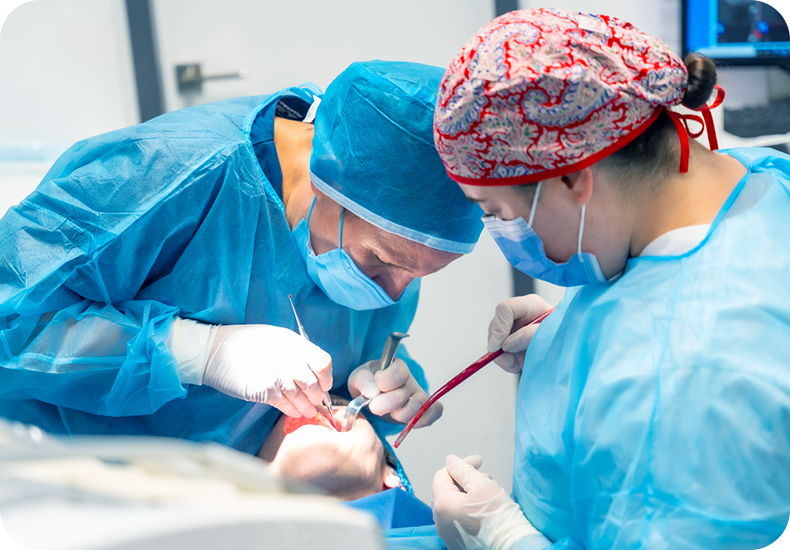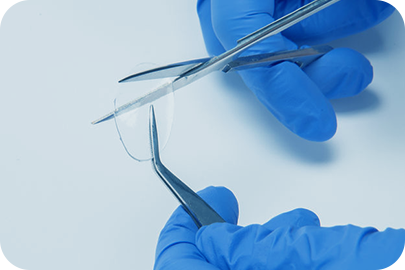
Amend Tissue Tape™
A non-resorbable, biocompatible hydrogel and surgical glue that easily adheres, covers, and protects wounds on the wet and uneven surfaces of the oral cavity through the duration of wound healing.


Product not yet approved for use by the FDA


How it works:
Tissue Tape consists of a hydrogel and adhesive, that can be quickly and easily combined chair-side.
The hydrogel contains an interpenetrating network of alginate and polyacrylamide that ensures a fracture toughness far greater than cartilage, but the elasticity and flexibility of natural rubber.
The adhesive is composed of chitosan that contains positively charged primary amine groups allowing it to strongly bond with negatively charged tissue surfaces such as gingival tissue forming covalent bonds across the interface.
Tough Gel Adhesives from Wyss Institute on Vimeo.
Clinical Need
Wound closure, protection and stable healing are key to ensuring outcomes in oral regenerative procedures. Current options for oral wound care are limited to difficult-to-apply glues and resins that last only a few hours after placement.
Tissue Tape will adhere and provide long-lasting protection during the critical phases of wound healing and has the potential to provide better outcomes and patient comfort following soft and hard tissue regenerative procedures such as:
- Reinforce and protect suture after socket extraction
- Graft containment after socket extraction
- Coverage of palatal or biopsy wounds
- Coverage of suture post-gingival recession surgery
- Coverage of aphthous ulcers
- Coverage of traumatic injuries
Key clinical features and benefits:
- Quick and easy chair side prep and application
- Does not require a dry field for application
- Does not stick to gloves
- Adheres gently upon application allowing for repositioning, after 30 to 45 seconds of light compression will adhere tightly to wet soft tissue
- Adhesion energy over five times greater than cyanoacrylate
- Flexible after placement to accommodate inflammation, movement and swelling
- Easily removed with forceps without disruption of the underlying tissue